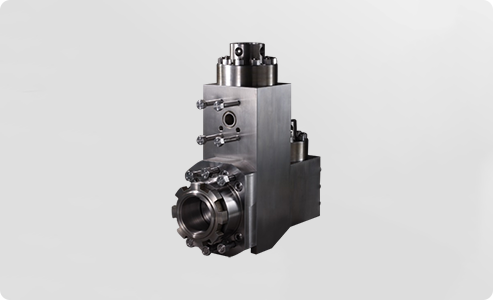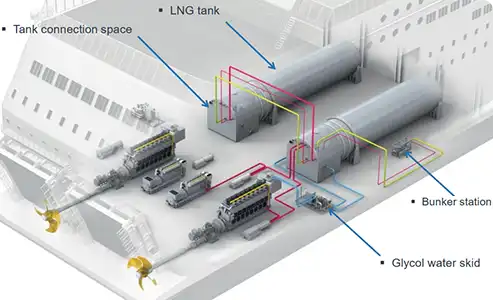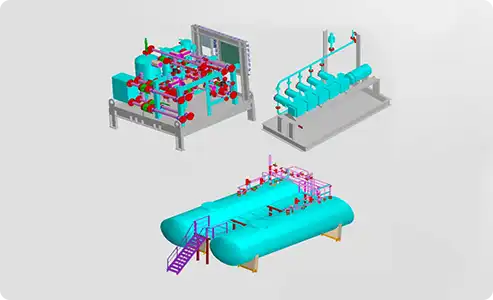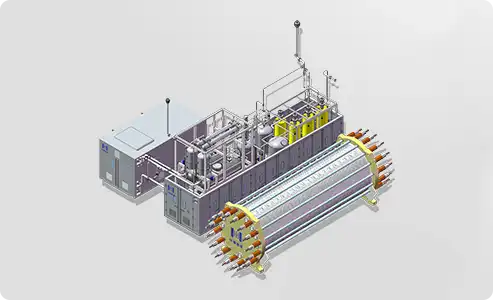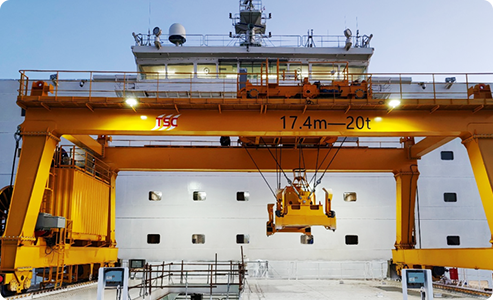How Does a Methanol Fuel Supply System Work in Marine Applications?
A methanol fuel supply system in marine applications functions as the heart of a vessel's methanol-powered operations. It is designed to precisely deliver methanol from onboard storage tanks to dual-fuel or methanol-specific engines, ensuring safe, efficient, and reliable combustion. Methanol, being a low-flashpoint liquid fuel, demands tight controls over pressure, temperature, and cleanliness. The system must also adapt dynamically to rapid load changes on engines and perform under various operational scenarios such as startup, standby, and emergency stops.
In CM Energy's marine systems, this includes a comprehensive arrangement of methanol storage units, high-pressure pumps, filters, heat exchangers, safety valves, and an advanced control interface. All components work together to ensure methanol is supplied at precise flow rates and under stable pressure, with minimal lag or fluctuation. By doing so, the fuel system supports both the propulsion and auxiliary functions of commercial ships, offshore vessels, and bunkering platforms, contributing directly to maritime energy transition goals.
What Are the Key Components of a Marine Methanol Fuel System?
Supply, Storage, and Control Modules
A well-engineered methanol fuel supply system in the maritime domain is comprised of several integrated subsystems. The supply system handles the pressurization and flow control, designed to meet engine-specific demands. Pumps in this unit are capable of rapidly adjusting to changes in engine load, helping maintain constant injection pressure.
Storage modules typically involve double-walled methanol tanks made of corrosion-resistant alloys. These are placed with careful attention to balance and accessibility onboard. Their placement depends on the vessel type—chemical tankers, passenger ferries, or bulk carriers all require distinct configurations.
The control and safety system includes programmable logic controllers (PLCs), pressure and temperature sensors, emergency shut-off valves, and fire suppression systems. This unit ensures the system reacts swiftly to all operational changes, keeping the fuel delivery accurate and secure.
Filtration and Thermal Management
Filtration ensures methanol purity by removing particulate matter or contaminants that can harm engine components. A multi-stage filter setup is often used to guarantee fuel cleanliness down to specified micron levels.
Methanol's combustion efficiency is sensitive to temperature. The system's thermal conditioning unit ensures methanol is preheated or cooled as needed before injection. Heat exchangers connected to auxiliary systems are commonly used for this purpose.
Auxiliary Units and Diagnostics
Auxiliary subsystems support de-aeration, recirculation, and nitrogen blanketing to prevent vapor formation. Modern systems also integrate diagnostic modules to monitor pump performance, leak detection, and real-time flow calibration.
Collectively, these components form a robust platform for methanol fuel operations at sea, where consistency, safety, and adaptability are essential.
How Do Methanol Dual-Fuel Engines Work Onboard Vessels?
Combustion Modes and Transitioning Capabilities
Methanol dual-fuel engines are capable of operating on both methanol and conventional fuels like marine diesel. In methanol mode, the engine receives methanol via high-pressure common-rail injection, aided by a small amount of pilot fuel to initiate combustion. This dual approach balances power output with emission reduction.
Engines can switch between methanol and diesel dynamically. During startup or in areas with limited methanol availability, the engine may run on diesel until optimal parameters are reached. Once ready, it seamlessly transitions to methanol, with the methanol fuel system adjusting pressures and flows automatically.
Engine Load Handling and System Synchronization
Marine engines often face varying load conditions, especially in offshore wind support or heavy lift vessels. Methanol fuel supply systems must synchronize fuel delivery with these shifts, ensuring pressure fluctuations remain within ±5%. CM Energy's configurations excel in maintaining smooth fuel transitions during such fluctuations.
Fuel mapping algorithms preprogrammed into engine control modules (ECMs) help adjust air-fuel ratios and ignition timing. These mappings are fine-tuned to each vessel's propulsion profile, from long-haul container ships to dynamic positioning-enabled offshore platforms.
Safety Integration in Engine Operation
Methanol's toxicity and low flash point require dedicated ventilation, leakage detection, and shutdown protocols. Gas detection sensors are mounted near engine rooms, and fire-retardant insulation materials are installed in fuel line areas.
The engine's compatibility with methanol is ensured through hardened valves, methanol-rated seals, and coated fuel lines. Maintenance cycles also differ, with special attention given to fuel injectors and cylinder heads.
By coordinating seamlessly with fuel delivery systems, these dual-fuel engines present a scalable, lower-emission alternative for shipowners aiming to meet IMO decarbonization targets.
Benefits of Methanol Fuel Systems for Sustainable Shipping
Cleaner Emissions and Regulatory Compliance
Methanol produces no sulfur oxides (SOx), minimal nitrogen oxides (NOx), and negligible particulate matter. It also allows a significant reduction in greenhouse gas (GHG) emissions when compared to heavy fuel oil. For vessel operators navigating Emission Control Areas (ECAs), using a methanol fuel supply system is a strategic choice for meeting environmental regulations.
Methanol’s compatibility with existing bunkering infrastructure and its liquid state at ambient temperatures simplify onboard handling compared to LNG or hydrogen. This reduces both retrofitting costs and safety risks.
Cost Efficiency and System Flexibility
Methanol can be produced from natural gas, biomass, or captured CO2, enabling operators to shift toward renewable pathways without major hardware changes. With growing supply networks in Asia and Europe, price volatility is expected to reduce.
Methanol fuel systems, particularly those developed by CM Energy, offer scalable flow rates (e.g., between 4m³/h and 8m³/h for specific models)and are modular in design. This means they can be easily integrated into new builds or retrofitted into existing vessels.
With pressure ratings typically ranging from 2 bar to 8 bar, the systems maintain stable operation across a wide variety of maritime conditions. From passenger ferries in the Mediterranean to offshore construction vessels in the North Sea, methanol systems are proving reliable and adaptable.
Contribution to Future Energy Goals
Methanol’s potential goes beyond current use. It plays a critical role in the long-term decarbonization strategy for ocean-going vessels. Methanol can act as a hydrogen carrier or be synthesized from renewable sources like green hydrogen and captured carbon, enabling it to contribute to net-zero targets.
For shipowners and port operators looking to future-proof their fleets and infrastructure, adopting methanol fuel systems today sets a strong foundation for the integration of next-gen fuels like synthetic ammonia or large-scale hydrogen.
As CM Energy continues to invest in methanol system R&D, backed by over 150 patents and global offshore deployment experience, it aims to strengthen the maritime industry’s journey toward cleaner propulsion.
For more information about methanol fuel supply system solutions, contact info.cn@cm-energy.com.
References
1. DNV Report on "Methanol as a Marine Fuel"
2. MAN Energy Solutions Whitepaper on Dual-Fuel Methanol Engines
3. IMO Strategy on Reduction of GHG Emissions from Ships
4. ABS Advisory: Methanol as Marine Fuel
5. Lloyd’s Register: Fueling the Future with Methanol
6. CM Energy Internal Technical Whitepapers (Project No. CMGS0001 and CMGS0000YJ)


